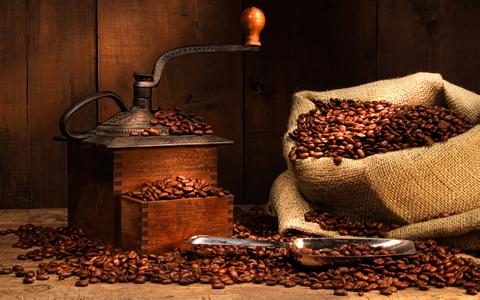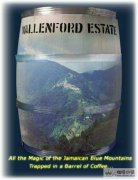Coffee basic knowledge Coffee ranks first among the three largest drinks in the world.
It is the second largest trading commodity in the world (only after oil), and it is also an important raw material for medicine, food and light chemical industry. At present, the global coffee culture and drinking coffee are "woody coffee", and mainly produced in Vietnam, Brazil, Colombia, Indonesia and other Central America, Africa, Asia and other regions near the equator. In China, only Yunnan, Hainan and other subtropical areas have a small amount of planting, with an output of about 40,000 tons. The global annual consumption of coffee is more than 7 million tons, and China's annual consumption is about 200,000 tons, more than 90% of which depends on imports. With the economic development, the improvement of people's living standards, the change of consumption structure and the development of tourism, the consumption of coffee chains in China and the world is increasing year by year. Woody coffee will be in short supply for domestic and foreign brand coffee industry.
Herbal coffee was originally a wild plant of the subfamily Rutaceae, which was associated with woody coffee trees in Brazil for many years. It is said that as early as 1400 years ago, the thick Zen master of the Sui Dynasty used its fruit to make "strengthening tea", which was presented to the Sui emperor as a palace tribute and became a secret recipe of the court, and then lost.
In order to explore this new resource of coffee, Mr. Li Zhanyi of China, with the help of nine institutions of higher learning and research units, as well as a number of experts and professors, including the Chinese Academy of Sciences and the Academy of Agricultural Sciences, has been successful after more than a decade of arduous efforts to cultivate and improve it since 1988. It has been successfully planted in about 500 counties in 22 provinces, autonomous regions and cities across the country, breaking the situation of woody coffee dominating the world. Taking advantage of the characteristics of wide planting area, rich nutrition, low cost and high added value of developed products, comprehensive application development and supplement of imported woody coffee can meet people's growing consumption demand for coffee food. it has remarkable economic and social benefits. This achievement is listed as the "National key Popularization Plan of Scientific and technological achievements" by the Ministry of Science and Technology as a national project.
According to reports, from the macro point of view of coffee knowledge, herbal coffee is completely comparable to woody coffee, and has obvious advantages. It has been proved that herbaceous coffee has the composition, color, aroma and taste of woody coffee, and the contents of fat and starch are similar to those of woody coffee. Protein, amino acids, iron, zinc, calcium, selenium and other trace elements most needed by the human body are higher than those of woody coffee. Caffeine content is moderate, in line with human needs standards and international food hygiene indicators. Toxicity tests show that herbal coffee products are non-toxic and non-hazardous.
Herbal coffee has the functions of diuresis, defecation, eyesight, protecting liver, strengthening heart, protecting kidney, lowering blood lipids, anti-cancer, losing weight, refreshing, awakening, increasing memory and anti-aging, and is rich in nutrition. It is a new resource of health food.

Important Notice :
前街咖啡 FrontStreet Coffee has moved to new addredd:
FrontStreet Coffee Address: 315,Donghua East Road,GuangZhou
Tel:020 38364473
- Prev

Ethiopian boutique coffee introduces Yega Xuefei boutique coffee beans
Yirga cheffe is a small town in Ethiopia, 1700-2100 meters above sea level, and it is also synonymous with Ethiopian boutique coffee. Since ancient times, it is a wetland, the ancient saying Yega yirga means to settle down, and Sheffield cheffe means wetlands, so Yejasuefi means to let us settle down in this wetland. Strictly speaking, Yega Xuefei is Ethiopia.
- Next

The Beauty of Classic balance-the flavor and taste of Jamaican Blue Mountain Coffee beans? How to brew Blue Mountain Coffee
Blue Mountain Coffee is cool and foggy over 1800 meters. Blue Mountain Coffee has been praised as the best coffee because of its sparse production and bitter taste. Its sweet, bitter and mellow taste has always been respected by consumers. The official website of the Jamaican government Blue Mountain Coffee gives a very strict definition: blue Mountain Coffee must be grown in the Blue Mountain area and processed by a government-authorized processing plant.
Related
- Detailed explanation of Jadeite planting Land in Panamanian Jadeite Manor introduction to the grading system of Jadeite competitive bidding, Red bid, Green bid and Rose Summer
- Story of Coffee planting in Brenka region of Costa Rica Stonehenge Manor anaerobic heavy honey treatment of flavor mouth
- What's on the barrel of Blue Mountain Coffee beans?
- Can American coffee also pull flowers? How to use hot American style to pull out a good-looking pattern?
- Can you make a cold extract with coffee beans? What is the right proportion for cold-extracted coffee formula?
- Indonesian PWN Gold Mandrine Coffee Origin Features Flavor How to Chong? Mandolin coffee is American.
- A brief introduction to the flavor characteristics of Brazilian yellow bourbon coffee beans
- What is the effect of different water quality on the flavor of cold-extracted coffee? What kind of water is best for brewing coffee?
- Why do you think of Rose Summer whenever you mention Panamanian coffee?
- Introduction to the characteristics of authentic blue mountain coffee bean producing areas? What is the CIB Coffee Authority in Jamaica?

